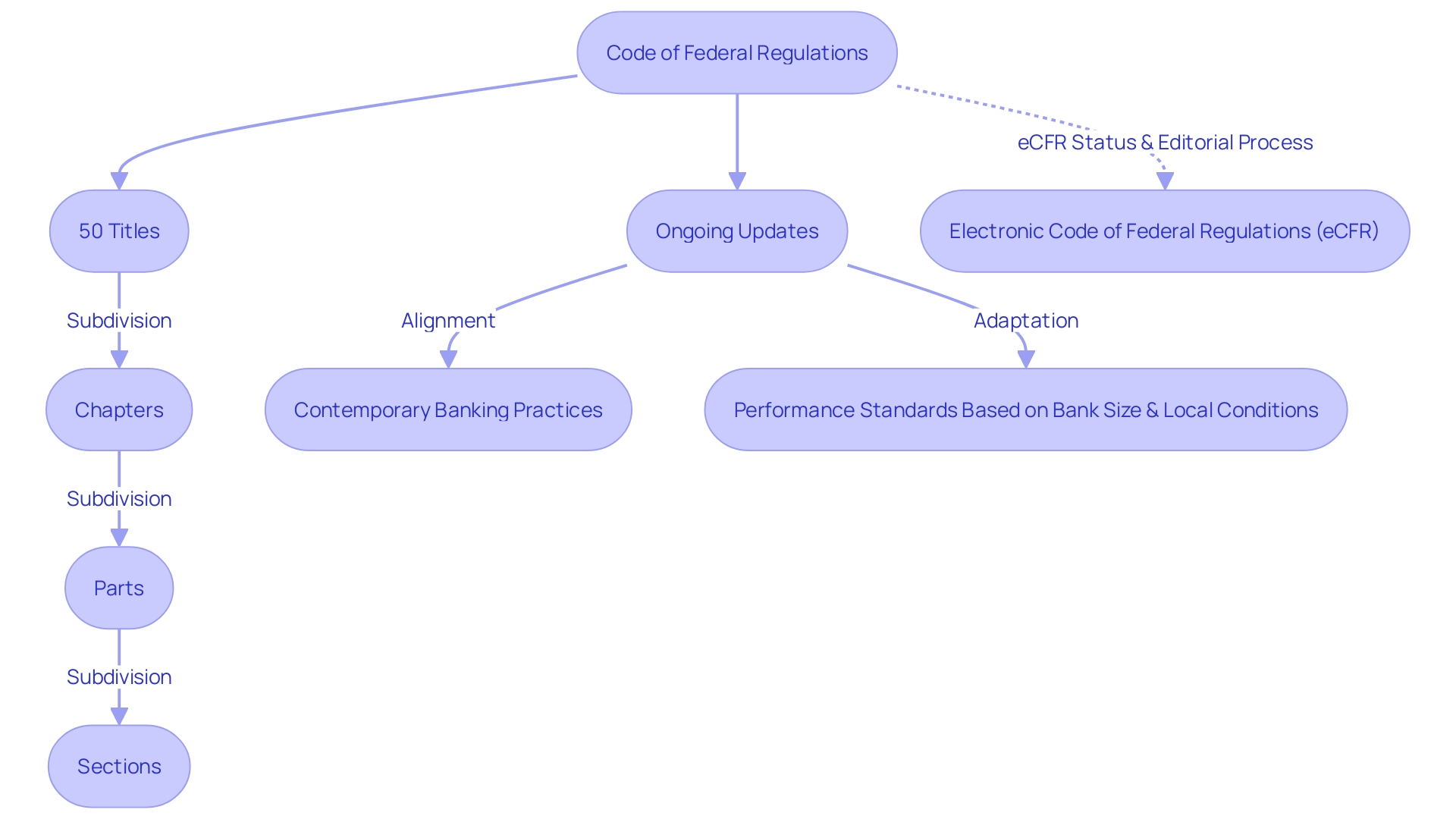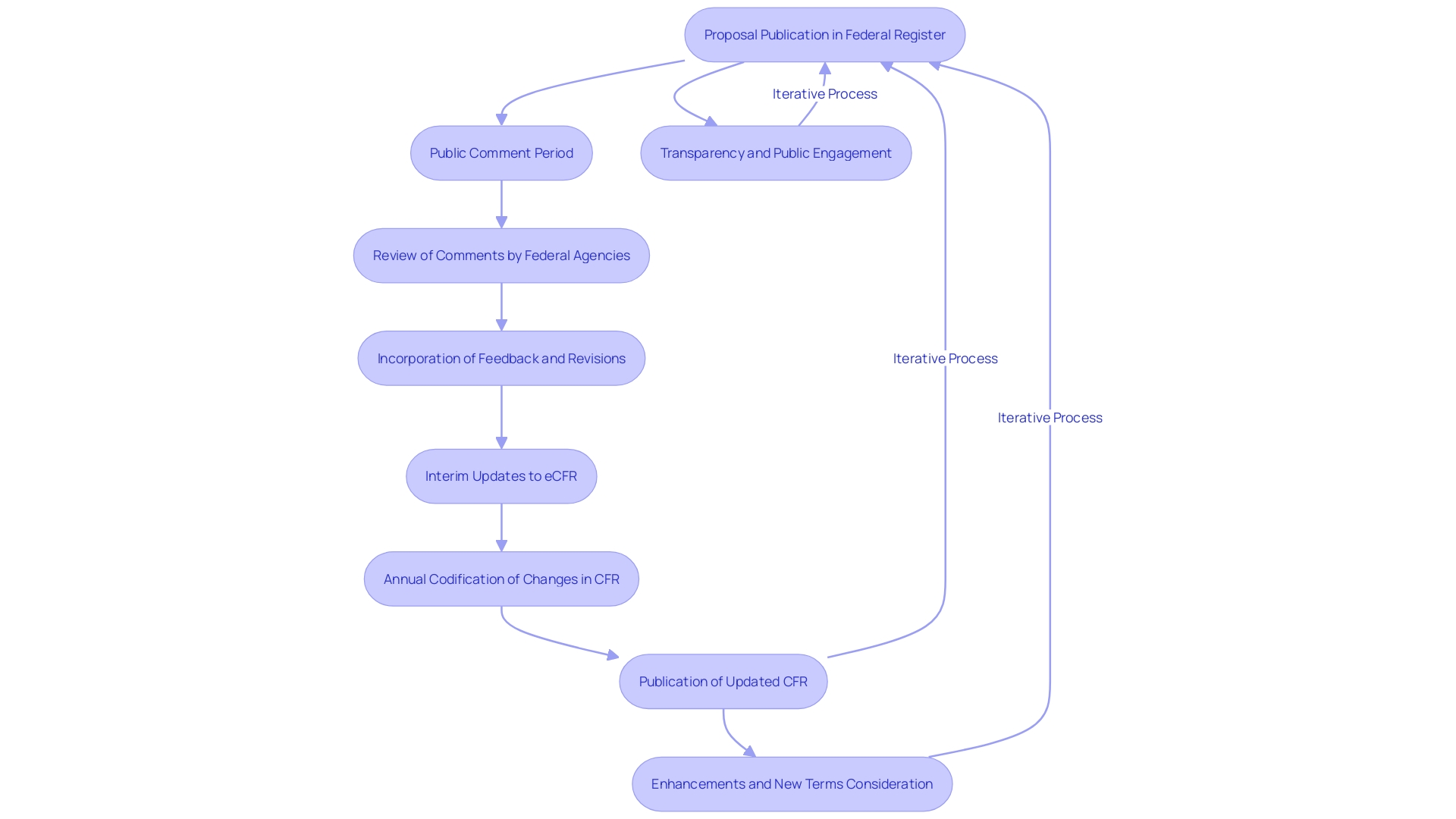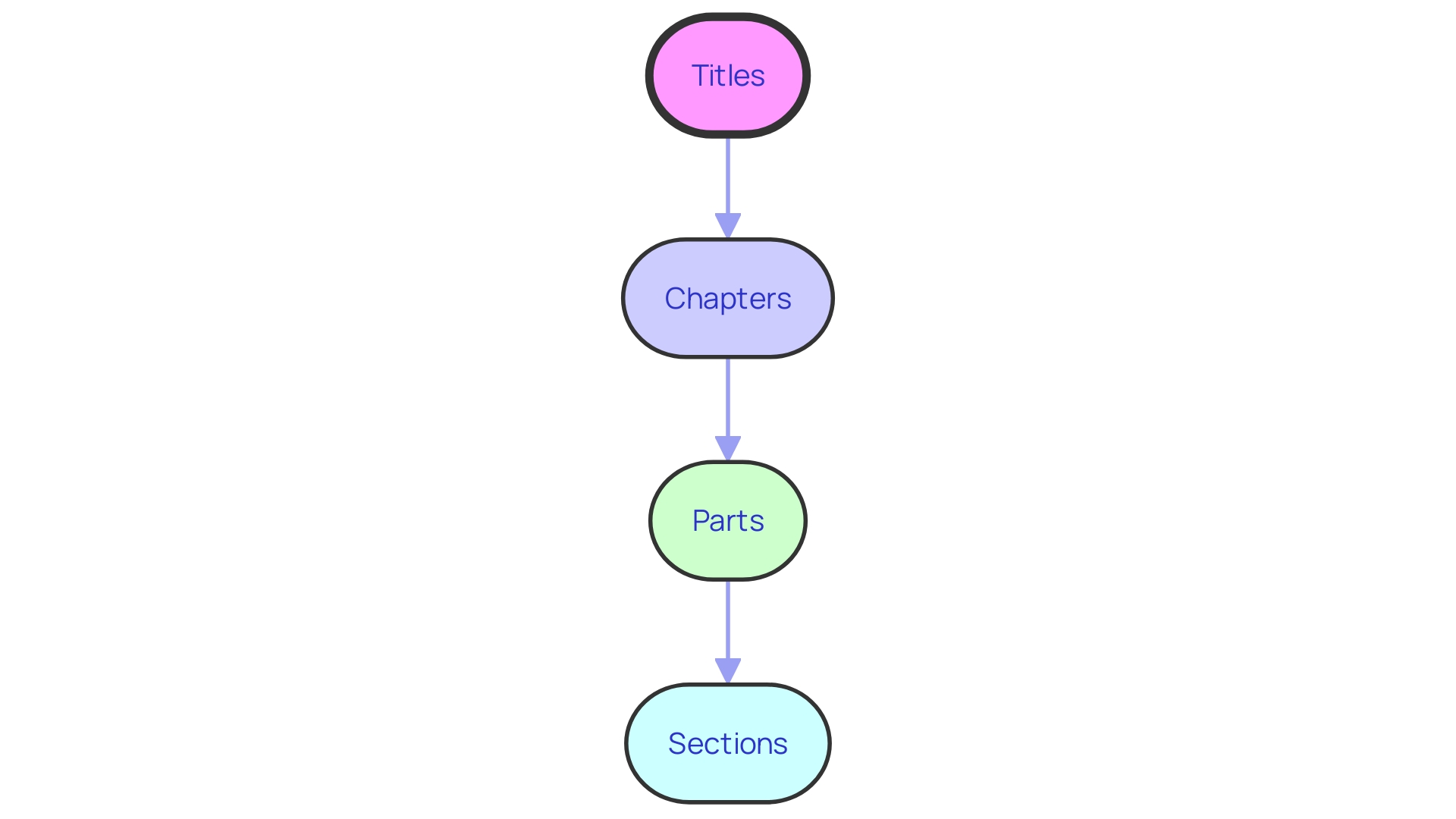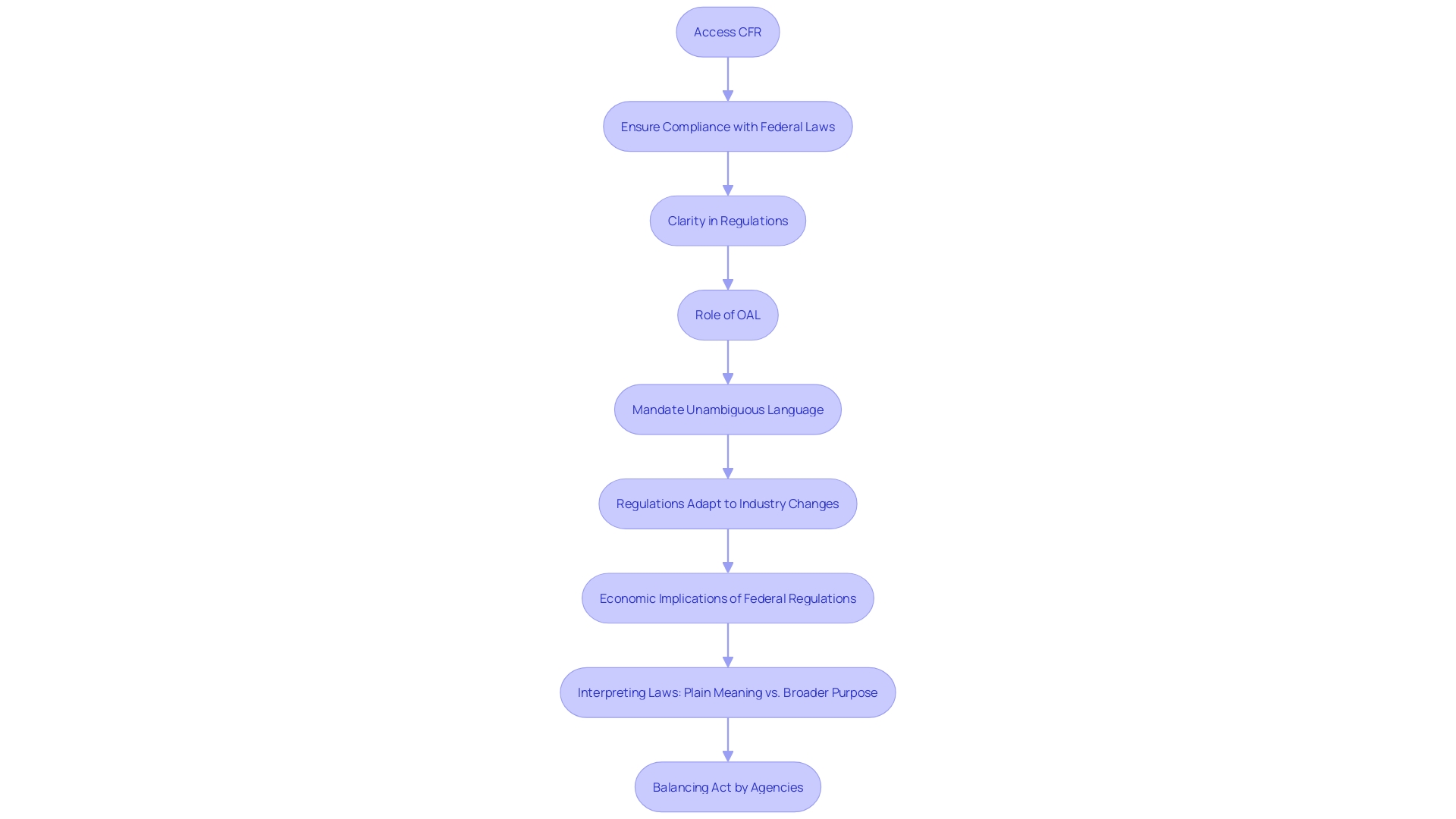Introduction
Since its establishment in 1938, the Code of Federal Regulations (CFR) has played a crucial role in organizing the extensive array of federal rules and regulations. Designed to simplify the complex web of regulatory information, the CFR has been instrumental in making these regulations more accessible to the public. As technology advances and regulatory practices evolve, the CFR continues to adapt, ensuring clear, consistent, and adaptable regulations.
The recent proposals to amend Community Reinvestment Act (CRA) regulations exemplify the need for regulatory frameworks that keep pace with industry trends, such as online banking, while maintaining their core objectives. With the ongoing development of the CFR, it is evident that the commitment to providing accurate and detailed information to the target audience in a formal and professional manner remains unwavering.
History and First Publication of the CFR
Since its inception in 1938, the Code of Federal Regulations (CFR) has served as the linchpin for organizing the multitude of rules and regulations issued by federal agencies. Designed as a tool to simplify the labyrinthine network of federal regulations, the CFR has been pivotal in making regulatory information more accessible to the public. As the digital age ushers in new expectations for accessibility and functionality, the CFR's evolution continues to mirror advancements in technology and shifts in regulatory practices. Notably, with the emergence of approximately 26,000 federal websites, there is a concerted effort to streamline design and usability, ensuring that vital services are available to all citizens. This commitment to digital architecture, akin to the transition from majestic government buildings to user-friendly online interfaces, underscores the importance of clear, consistent, and adaptable regulations. Recent proposals, such as those on June 3, 2022, to amend Community Reinvestment Act (CRA) regulations, emphasize the need for regulatory frameworks that evolve with banking industry trends, like online banking, while maintaining their core objectives and adapting to varied banking models and local conditions. In line with these modernization efforts, retrospective reviews of regulations have been recommended, reflecting a continuous drive to refine and update the CFR to better serve the public interest. The ongoing development of the CFR echoes the transformation seen in resources like the Disability Rights Handbook, which has grown from a modest pamphlet to a comprehensive guide over the years. Such efforts are a testament to the principle that legal materials should be affirmatively available online, as advocated by experts and reinforced by legislative acts like the Freedom of Information Act (FOIA).

Structure and Organization of the CFR
The Code of Federal Regulations (CFR) is meticulously structured into 50 distinct titles, each corresponding to a particular sphere of federal jurisprudence. These titles encompass an extensive array of topics such as agriculture, commerce, energy, and transportation, to list a few. For ease of navigation and precision, each title is systematically subdivided into chapters, parts, and then further into sections. This hierarchical arrangement aids in swiftly pinpointing the exact regulations required. Additionally, ongoing developments, like those proposed on June 3, 2022, seek to enhance the effectiveness of these regulations by aligning them with contemporary banking practices, like mobile and online banking, and by providing greater clarity and uniformity in their application. Furthermore, these updates aim to adapt performance standards and data collection in accordance with bank size, business models, and local conditions. The importance of such structured and updated regulations becomes particularly evident when considering complex systems, where the absence of clear guidelines can lead to significant failures with far-reaching consequences. The CFR's organized framework and continuous evolution reflect a commitment to maintaining a stable and predictable regulatory environment that can adapt to technological and industry advancements.

Update Cycle and Revision Schedule
Continual updates to the Code of Federal Regulations (CFR) are essential for ensuring that regulatory information remains current and reflective of the latest legislative and policy shifts. These modifications are not merely administrative; they embody critical changes, such as the integration of new terms within the glossary to aid in clarity and understanding in subsequent sections. The collaborative process between federal agencies and the Office of the Federal Register ensures the CFR is amended, with proposals published in the Federal Register before being codified annually. For instance, recent enhancements include comprehensive additions to the training, references, and resources sections, directly responding to stakeholder feedback and evolving industry needs. The iterative nature of these updates, akin to the agile methodologies in software development, allows for a more dynamic and responsive regulatory framework, accommodating advancements such as mobile and online banking. These improvements also aim to provide clearer guidance and address the nuances of different bank sizes, business models, and local conditions. With the digital age upon us, the eCFR—an electronic version of the CFR—serves as an interim source of regulatory information. However, users must understand it is not the official legal edition, which is maintained in the official print version and on govinfo.gov. These meticulous processes, including the consideration of public comments, which must be submitted with due regard for confidentiality, underscore the dedication to transparency and public engagement in the regulatory update process.

Components of the CFR: Titles, Chapters, Parts, and Sections
The Code of Federal Regulations (CFR) is structured in a hierarchical manner to ensure clarity and ease of navigation. At the broadest level, Titles group regulations into general subject areas, which are then further delineated into Chapters that provide an in-depth look at specific regulatory domains within each Title. Parts break down the chapters, focusing on particular topics of interest, and Sections offer the most granular details of regulatory guidance. Such an organized framework is crucial, as it facilitates the identification and comprehension of pertinent regulations by stakeholders. The importance of this structure becomes clear when considering complex regulatory environments, such as the safety standards for California's electrical companies, where clear categorization helps manage risk and compliance with evolving safety measures. In the context of drug regulation, for example, the CFR's organized layout aids in understanding the nuances of drug approval processes, such as 'orphan drug designation' or 'orphan subsets,' which have specific definitions and implications within the pharmaceutical industry. The CFR's methodical arrangement is akin to the way legal experts must navigate the intricacies of safety standards and the associated economic and reputational considerations. Just as legal assessments require thorough analysis and interpretation of standards, the CFR's layout assists users in dissecting and applying federal regulations effectively.

Accessing and Using the CFR: Online and Print Versions
Accessible in both digital and print formats, the CFR caters to diverse user preferences. The digital version, hosted by the Government Publishing Office (GPO), is not only readily accessible via their website but also equipped with advanced search and navigation tools to streamline the process of locating specific regulations. Meanwhile, the annual print edition is available for purchase through the GPO or can be found at numerous libraries and government entities. These multiple access points underscore the CFR's commitment to ensuring that regulatory information is available to all, reflecting the broader objective of transparency and accessibility in governmental communication.
Bulk Data and XML Files Availability
Access to the Code of Federal Regulations (CFR) extends beyond traditional print and online versions. To cater to specialized needs, the CFR is also available in bulk data and XML formats. These formats serve as a boon to those in fields such as research, software development, and data analysis, where manipulating and processing CFR data is essential. For example, Bosch's use of digital twin technology in their solid oxide fuel cell (SOFC) systems exemplifies the power of digital tools. They use digital twins to monitor and optimize the performance and costs of their systems throughout their lifecycle, demonstrating how complex data can be managed efficiently. Similarly, scalable reading practices in historical research demonstrate the potential of combining close and distant reading techniques to analyze text reuse data. These practices, informed by interdisciplinary workshops and interface design, can be applied to parsing and understanding the detailed provisions within the CFR.
The Food and Drug Administration (FDA) itself underscores the importance of managing extensive data sets, as seen in their safety and effectiveness data submissions for new drugs or biologics, which require thorough analysis and are critical for regulatory approval. The annual data file release by the CFR, which includes tools for creating alternative file formats, reflects an understanding of this complexity and a commitment to meet the community's needs for diverse data file formats. This is crucial, as the HHS agencies face the challenge of collecting and processing vast amounts of varied data, which is often dispersed across different systems, making integration a complex task.
In light of these developments, the CFR’s provision for bulk data and XML files is a thoughtful response to the evolving needs of professionals who handle regulatory information. It enables efficient extraction and analysis, ensuring that data can be repurposed to meet the rigorous demands of innovation and compliance in various sectors.
Purpose and Importance of the CFR
Understanding the Code of Federal Regulations (CFR) is essential for ensuring that individuals and organizations are in compliance with federal laws, thereby mitigating the risk of legal penalties. The CFR acts as a comprehensive source that consolidates federal regulations, providing a single point of reference to maintain consistency and facilitating accurate interpretation. Its existence promotes transparency, allowing the public to easily access and understand the regulations that may affect them. This is critical, as clarity in regulations is mandated by the Office of Administrative Law (OAL), which requires that the language of regulations be unambiguous and understandable to those directly affected. Regulations are expected to be free of conflict and defined using terms familiar to the intended audience. Additionally, the CFR aids in adapting to industry changes, such as the rise of mobile and online banking, by providing updates that reflect new technologies and business models. The importance of clarity, authority, and reference in regulatory language is underscored by case studies, such as the safety standards in utility companies, which illustrate the trade-offs and reputational risks involved in regulatory compliance. Moreover, the economic implications of the regulatory state are significant, with rules and mandates often described as a 'hidden tax' due to their unbudgeted and difficult-to-quantify financial impact. In the realm of federal regulations, agencies must balance the need for clarity and the intent of Congress, as shown in Supreme Court cases that have tackled the interpretation of laws based on their plain meaning versus their broader purpose and context.

Key Features and Tools for Researching the CFR
Navigating the complexities of the Code of Federal Regulations (CFR) is a multifaceted endeavor, essential for staying compliant with federal rules. Fortunately, there are several features designed to streamline this process. The eCFR, for instance, is meticulously organized with indented paragraphs that reflect the document's hierarchy, simplifying the search for specific sections. Additionally, cross-referencing within the CFR is a useful feature, connecting related regulations and providing clarity on how they interrelate.
For those examining the historical context of regulations, archived versions of the CFR are invaluable, allowing one to observe the progression and amendments over time. This historical perspective is crucial when considering changes in regulatory expectations, such as orphan-drug designations, which grant market exclusivity for certain pharmaceuticals under specific conditions.
The CFR also contains nuanced definitions that are vital to understanding regulatory language. For example, the distinction between drugs composed of small molecules versus those of large molecules has significant implications for approval and exclusivity. Understanding such nuances is essential for ensuring that research and development align with current regulatory standards.
Further, a wealth of supplementary materials enhances the usability of the CFR. These include explanatory notes, commentaries, and interpretations that elucidate complex regulatory language and provide insight into the intent behind certain rules. For instance, the FDA's explanation of orphan subset designations clarifies the appropriate use of a drug within a specific subset of a non-rare disease, based on properties like drug toxicity or mechanism of action.
As regulations continually evolve, staying informed is crucial. News from research organizations and innovative companies, such as Garmin's receipt of the Robert J. Collier Trophy for its autonomous flight system, Garmin Autoland, highlight the real-world applications of regulatory adherence and the importance of staying current with technological advancements and their regulatory implications.
In summary, the CFR's search functionalities, historical archives, cross-references, and supplementary resources are integral tools for researchers to effectively navigate federal regulations. These features, alongside a clear understanding of definitions and the context provided by case studies and industry news, equip professionals with the means to align their work with regulatory requirements, ensuring both compliance and the advancement of their fields.
Conclusion
The Code of Federal Regulations (CFR) has played a crucial role in organizing and simplifying federal rules and regulations since 1938. It ensures accessibility to the public and adapts to industry trends while maintaining core objectives. Recent proposals to amend Community Reinvestment Act (CRA) regulations highlight the need for adaptable frameworks.
The CFR's structure aids in swiftly pinpointing regulations, and ongoing developments enhance their effectiveness. Continual updates ensure current and reflective regulatory information, accommodating advancements like mobile and online banking. The provision of bulk data and XML files enables efficient extraction and analysis.
The CFR serves as a comprehensive source that consolidates federal regulations, promoting transparency and accessibility. Key features and tools, such as the eCFR, cross-referencing, historical archives, and supplementary materials, aid in researching and understanding federal regulations. These resources, along with a clear understanding of definitions and industry context, equip professionals with the means to align their work with regulatory requirements.
In conclusion, the CFR's ongoing development and adaptability demonstrate a commitment to providing accurate and detailed information in a formal and professional manner. Its structure, organization, and continuous updates ensure clarity, consistency, and adaptability in federal regulations. By providing accessible resources and tools, the CFR facilitates compliance, transparency, and the advancement of various industries.




